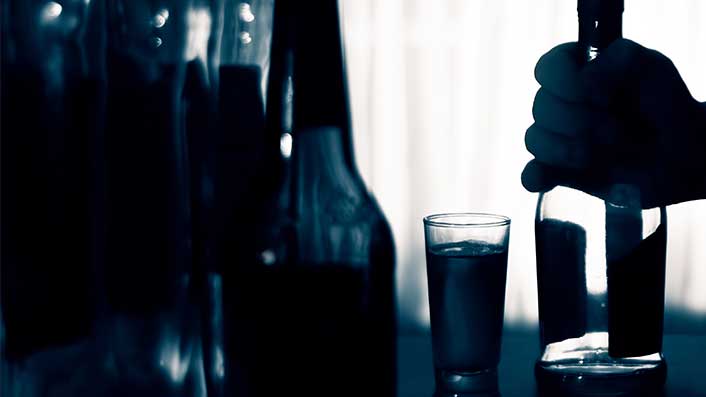Binge Drinking In Ohio | Side Effects & Dangers

Medically Reviewed By: Kimberly Langdon, M.D.
Binge drinking is defined as drinking at least 4 to 5 alcoholic beverages in a short period of time. Binge drinking can cause severe impairment, an increased risk of injury, and long-term health problems.

Binge drinking is defined as consuming 5 or more alcoholic beverages for men, or 4 or more alcoholic beverages for women, in 2 hours or less.
Binge drinking accounts for almost all forms of excessive drinking in the United States, and affects all age groups from adolescents and college students to older adults. In 2019, almost 39% of young adults aged 18-25 in Ohio reported binge drinking in the past month.
In 2020, 17.7% of Ohio adults reported at least one instance of binge drinking or heavy drinking in the past 30 days. This number is similar to the national average. Excessive alcohol consumption in Ohio can be treated through various programs.
Defining Binge Drinking
Binge drinking is defined as a pattern of drinking which raises the blood alcohol concentration (BAC) to 0.08 percent or higher. In the average man and woman, this BAC can occur after 5 or 4 alcoholic drinks, respectively.
Binge drinking is separate from heavy drinking, which is a drinking habit involving a large amount of alcohol per week. It is also separate from chronic forms of alcohol misuse, such as alcohol dependence.
Effects Of Binge Drinking
After binge drinking, you may feel the intense effects of alcohol, such as:
- impairment
- slurred speech
- drowsiness
- loss of coordination
- memory loss
- nausea
- vomiting
- a hangover the next day
Dangers Of Binge Drinking
Health organizations do not define binge drinking as a form of alcohol use disorder (AUD). To qualify as an alcohol use disorder, a drinking problem must be chronic and a victim may struggle to stop drinking. However, around 75% of U.S. adults who binge drink do not do so weekly.
Although it is not a form of AUD, binge drinking can still be a high-risk form of drinking alcohol that can be detrimental to your health.
Alcohol Poisoning
Alcohol poisoning can occur at BAC levels of 0.25% or higher. The threshold of alcohol poisoning may vary from person to person.
Signs of alcohol poisoning include slow or irregular breathing, vomiting, low body temperature, and an inability to wake up. Without proper and immediate treatment, episodes of alcohol poisoning can be life-threatening.
Risk Of Injury
Excessive drinking is linked to a higher risk of unintentional, life-threatening injuries, such as car crashes, drowning, and falls.
A high-risk pattern of drinking can impair a person’s judgment and decision-making. Binge drinking is linked to a greater risk of contracting sexually-transmitted diseases, initiating or being a victim of sexual assault, and violent behavior.
Blackouts
Blackouts, which are gaps in a person’s memory following the consumption of alcoholic drinks, can occur after binge drinking. Blacking out can reduce a person’s ability to make decisions and coordinate themselves. Blackouts may also occur before suffering alcohol poisoning.
Dangers For Adolescents
Brain development continues into adolescence. Patterns of underage drinking in adolescents 12 to 17 can inhibit key parts of brain development, due to how alcohol affects the brain.
Young people who binge drink repeatedly may experience cognitive deficits later on in life, which may not have occurred without the presence of alcohol.
Long-Term Effects
Binge drinking infrequently may not constitute an alcohol use disorder. However, the presence of alcohol in the body can still lead to chronic diseases and conditions after months or years of binge drinking.
Binge drinking may be a risk factor for an weakened immune system, heart disease, liver disease, brain damage, and various forms of cancer.
If you or a loved one struggle with excessive drinking, contact Ohio Recovery Center for information on our alcohol treatment program. We provide professional healthcare services that can get your health back on the right track.
- America’s Health Rankings — Explore Excessive Drinking in Ohio | 2021 Annual Report https://www.americashealthrankings.org/explore/annual/measure/ExcessDrink/state/OH
- Centers for Disease Control and Prevention — Binge Drinking https://www.cdc.gov/alcohol/fact-sheets/binge-drinking.htm
- National Institute on Alcohol Abuse and Alcoholism — Understanding Binge Drinking https://www.niaaa.nih.gov/publications/brochures-and-fact-sheets/binge-drinking
- Substance Abuse and Mental Health Services Administration — Behavioral Health Barometer Ohio, Volume 6 https://www.samhsa.gov/data/sites/default/files/reports/rpt32852/Ohio-BH-Barometer_Volume6.pdf

